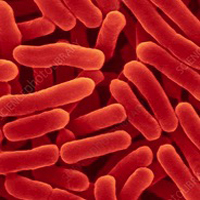Trend of Salmonella enterica occurrence and serotypes in Sardinian pig slaughterhouses

Submitted: 18 September 2020
Accepted: 22 March 2021
Published: 25 August 2021
Accepted: 22 March 2021
Abstract Views: 510
PDF: 303
HTML: 9
HTML: 9
Publisher's note
All claims expressed in this article are solely those of the authors and do not necessarily represent those of their affiliated organizations, or those of the publisher, the editors and the reviewers. Any product that may be evaluated in this article or claim that may be made by its manufacturer is not guaranteed or endorsed by the publisher.
All claims expressed in this article are solely those of the authors and do not necessarily represent those of their affiliated organizations, or those of the publisher, the editors and the reviewers. Any product that may be evaluated in this article or claim that may be made by its manufacturer is not guaranteed or endorsed by the publisher.
Similar Articles
- Silvia Bonardi, Ilaria Bruini, Rossella Magnani, Nicolò Cannistrà, Franco Brindani, Low prevalence of Salmonella enterica in cull dairy cattle at slaughter in Northern Italy , Italian Journal of Food Safety: Vol. 6 No. 1 (2017)
- Silvia Bonardi, Ilaria Bruini, Irene Alpigiani, Alice Vismarra, Elena Barilli, Franco Brindani, Marina Morganti, Paola Bellotti, Luca Bolzoni, Stefano Pongolini, Influence of pigskin on Salmonella contamination of pig carcasses and cutting lines in an Italian slaughterhouse , Italian Journal of Food Safety: Vol 5, No 2 (2016)
- Pierluigi Di Ciccio, Maria Cristina Ossiprandi, Emanuela Zanardi, Sergio Ghidini, Giancarlo Belluzzi, Alberto Vergara, Adriana Ianieri, Microbiological contamination in three large-scale pig slaughterhouses in Northern Italy , Italian Journal of Food Safety: Vol. 5 No. 4 (2016)
- Anna Mureddu, Roberta Mazza, Federica Fois, Domenico Meloni, Roberto Bacciu, Francesca Piras, Rina Mazzette, Listeria monocytogenes persistence in ready-to-eat sausages and in processing plants , Italian Journal of Food Safety: Vol. 3 No. 1 (2014)
- Silvia Bonardi, Marina Morganti, Giovanni Pupillo, Franco Brindani, Salmonella Brandenburg in the pork chain in Italy: Genetic comparison with the human isolates , Italian Journal of Food Safety: Vol. 7 No. 1 (2018)
You may also start an advanced similarity search for this article.

 https://doi.org/10.4081/ijfs.2021.9362
https://doi.org/10.4081/ijfs.2021.9362





